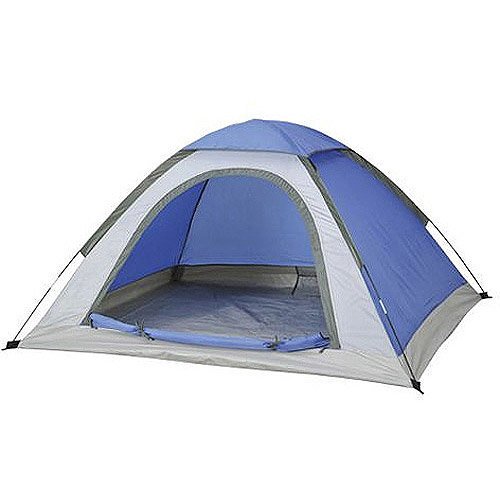 |
Not actually Erin. & is used with permission. |
 |
| https://www.walmart.com/ip/Ozark-Trail-2-Person-Jr-Dome-Tent-6-x-5-Blue-NEW/197340435 |
 |
| https://www.target.com/p/wakeman-happy-camper-two-person-tent-green/-/A-54521249 |
 |
Not actually Erin. & is used with permission. |
 |
| https://www.walmart.com/ip/Ozark-Trail-2-Person-Jr-Dome-Tent-6-x-5-Blue-NEW/197340435 |
 |
| https://www.target.com/p/wakeman-happy-camper-two-person-tent-green/-/A-54521249 |
While there are many gun care products available over the counter or online, sometimes we just want to make things ourselves. Of course, sometimes there aren’t other options available, so knowing how to make do is always a good idea.
MANDATORY DISCLAIMER: These recipes deal with harmful chemicals. If not handled carefully and with proper respect, they can cause serious harm to life and health. Please follow all safety precautions faithfully.
While these recipes may be adjusted to fit the user’s needs, be cautious of adding any new ingredients without an understanding of the likely chemical reaction.
Many shooters swear by Ed’s Red for cleaning their guns. It’s even reported to work well at removing plastic wad residue from shotgun barrels.Ed’s Red is made up of equal parts:
- Dexron II, IIe or III Automatic Transmission Fluid
- Kerosene
- Oderless mineral spirits
- Acetone
Make sure to mix outdoors in a well ventilated area using a metal container, then store in a well-sealed metal or plastic gas can.
I’m sure the majority of our regular readers are aware of the importance of range safety. Most people know this means following range instructions from the range safety officer and/or match director, keeping your muzzle down range, and other basic safe gun handling, but there’s more to it than that. Range safety also includes personal protective equipment (or PPE) which includes dressing properly for the range.
A request was made by our Editrix to talk about similar options for
semi-automatic firearms. Due to the physics involved, this will almost solely
deal with parts replacement. Keep in mind that not only can this get expensive
fast, but it may also require a certain amount of part fitting.
A regularly repeated concept throughout the metallic cartridge era is a set of parts that will allow the use of .22 Long Rifle rounds in a centerfire firearm. Whether to reduce training expenses or increase versatility, this long standing idea has some value. The Colt Ace .22 conversion was one of the first successful options for use in a semi-automatic firearm, in this case the normally .45 ACP Colt 1911 and 1911A1 pistols. These conversion kits came with a lightened slide, barrel, ejector, barrel bushing, recoil spring guide, recoil spring, recoil spring plug, slide stop, and magazine, and could be used with any Government Model 1911.
Actual Colt branded kits are collector’s items and priced appropriately. However, there are other options on the market for converting semi-automatic pistols to rimfire. Among others, Advantage Arms offers a variety of kits for several different pistols. Pricewise, these can nearly equal the price of a dedicated budget .22 pistol. The Glockparts, Brownells, and MidwayUSA websites list this brand as well as others.
Similar concepts have been tried with semi-automatic
centerfire rifles, and by far the most common today are for America’s Rifle, the
AR-15. I have an earlier model made by CMMG
and it works quite well, turning any .223/5.56 AR into a rimfire rifle
suitable for training or small game hunting. The more recent versions of this
kit lock back the bolt when empty, something my older one doesn’t do.
Chamber adapters, however, are the size and shape of a cartridge sans bullet and are generally for cartridges of similar bullet diameter. Inserts can be for almost any caliber smaller than the host firearm, and can be more easily used in repeating firearms. I bought one of MCA's more budget-friendly chamber adaptors that allows me to shoot .32 Auto and .32 S&W in my .30-30 Marlin. It’s reasonably accurate, and would be useful for small game at moderate ranges.
I used the word potentially above because some caliber barrels have different external diameters and won’t mix and match with all slides. Having to buy an entire upper half of a gun (slide, barrel, and probably recoil spring) really puts this on the wrong side of a cost-benefit analysis.
That’s the semi-automatic side of the caliber versatility
world. Hopefully this information was both interesting and useful.
 | |
| Solo Stove Co picture |
The Solo Stove story began with this little stove. Two brothers wanted to create an ultralight camp stove that could boil water in under 10 minutes using sticks and twigs as fuel.
The result: the Solo Stove Lite. Our Signature 360° Airflow Design™ lets you hit the trail, enjoy a hot meal, and keep moving.
Join thousands of others enjoying its powerful, efficient burn. See how it works below.
 |
Not actually Erin. & is used with permission. |
 |
| https://amzn.to/3FodQ7m |
 |
| https://amzn.to/3CpXnOd |
There’s also the .357 Remington Maximum, a slightly lengthened and more powerful .357
Magnum, but guns chambered in this caliber are rare as hen's teeth, and so is
the cartridge.
While named similarly, .38 Smith & Wesson is a completely different cartridge, and no attempt should be made to fire it in a revolver chambered for either .38 Special or .357 Magnum! The .38 S&W case is slightly larger in diameter and won’t fit in a .38 Special or .357 Magnum chamber. Neither should .38 Special be fired in a .38 S&W revolver as, if it does chamber, the case will likely rupture on firing.
 |
Not actually Erin. & is used with permission. |
 |
| I know it looks like I might be able to fit another ration brick on top of the first, but it won't fit. The bricks are taller than they are wide by half an inch. |